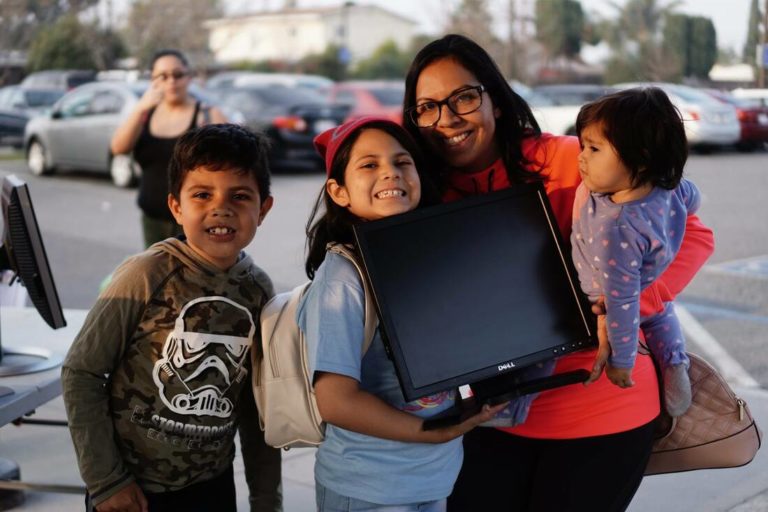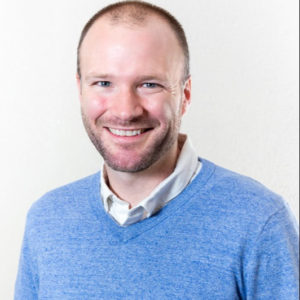

Seth Hubbert
Seth Hubbert is the Executive Director of Tech Exchange, a nonprofit organization with a mission to address digital equity by providing computers and digital support services to underserved residents of California’s Bay Area. Hubbert was previously a technology specialist in both public and private school settings. He has an undergraduate degree in physics, and received his Master in Education while working in the Teach for America program. ESAL interviewed Hubbert about Tech Exchange, as well as his professional journey to enabling technology for social change.
DR: What does Tech Exchange do? Please tell us about its mission.
Hubbert: Tech Exchange offers digital inclusion services to help underserved community members by 1) Refurbishing donated computers and providing them to underserved communities; 2) Giving digital skills training to build people’s capacity to be productive online, whether to monitor personal finances or a child’s education; 3) Introducing people to affordable internet options and hand-holding them through the process of getting access; 4) Offering tech support to the underserved community to resolve problems that arise with hardware or user errors.
DR: I know that you run a Tech Hub and are opening another. What is a Tech Hub?
Hubbert: A Tech Hub feels like a community center. It’s a computer lab where people can come to get free or low-cost computers (based on eligibility criteria), as well as get instruction and tech support, for example from our nonprofit partners.
DR: If you are giving away computers, how do you keep this organization funded?
Hubbert: Funding is an ever-evolving challenge. In 2015, we won a four-year grant from a foundation that allowed us to grow from grass roots to developing operational capacity that can serve the broader East Bay. Since then, we have diversified our funding streams a bit, but still with about 75% coming from grants or donations, and 25% through social enterprise.
DR: What is an example of “social enterprise?”
Hubbert: Our social enterprise includes providing enterprise solutions to schools and nonprofits that are setting up their own computer centers. We offer a range of services from hardware to custom imaging.
DR: You mentioned you’re expanding. How would you describe your emerging geographic target audience?
Hubbert: We aim to become a leader in providing services to the Bay Area at large. We might think of the Bay Area as Silicon Valley, but there are actually 1.5 million bay area residents not connected at home, indicating an inordinate equity gap in access to technology. We now serve Alameda and Contra Costa County, and are running pilots in San Francisco, San Jose, and Vallejo.
DR: I know you have an internship program. Is that something you hope will help build your capacity?
Hubbert: Our internship program helps develop a tech workforce, which is one of the pillars of our organization. We expose interns to the full range of what we do, although they ultimately hone in on their interests. Interns work alongside warehouse techs receiving computers, testing them, wiping them, loading operating systems and drivers, and otherwise refurbishing. Interns also see the community service side of the organization, by helping run classes at schools and other sites and providing tech support.
DR: Do you tend to get equal participation of men and women as interns?
Hubbert: We tend to get more men, although we’d like to get more female representation, which is a goal of the tech industry at large. Because the main challenge is in recruitment of women, we work through internship placement partners to help them properly position the work.
DR: Can you tell me more about the demography of the populations that benefit from your work?
Hubbert: Spanish-speaking Latino families are the most technologically disconnected population in California. We aim to fully support that group, and employ a variety of bilingual staff. Around 60% of clients we serve are Latino. Another 30% are African American, and about 10% are Asian and other.
DR: How do you find families and schools in need of more digital connectedness?
Hubbert: We have discovered that if we try to interface directly with the community, our services sound like a scam: “Free computers! Free tech support!” The best way to access the underserved is through organizations that already have trusted community relationships. We partner with libraries, schools, or other local organizations. A priority is working with lower income schools and districts.
DR: What about people who are confined to their homes by disabilities or illness? How do you reach them?
Hubbert: We still need to grow in terms of serving those folks. We have started bringing services to people in place at public housing projects, and also senior sites – providing both training and hardware at their residences. For example, we’ll set up a computer lab, then offer our pool of trainers that speak five different languages. We’ve even had our techs bring computers into a person’s individual living space and help get them up and running.
DR: What inspired you to transition from a K-12 school setting to Tech Exchange?
Hubbert: I was initially targeting science, when I interned and worked at NASA. While it was interesting, important work, I did not feel like my full skill set was tapped into. Both my parents are social workers, and my sister is a special needs teacher. I grew up feeling compelled to serve my community. So I joined Teach for America. There I gained my Masters in Education while simultaneously getting my feet on the ground teaching. And, from the get go I was interested in helping students from underserved backgrounds.
DR: Did Teach for America launch you on your new path?
Hubbert: Yes, I was a science teacher but also started a technology elective, plus an afterschool program - a “Geek Squad” - where students were fixing computers and restoring them to classrooms. It’s what I am doing now, on a small scale. And I was in a New York City school with 95% lower income students.
DR: Didn’t you also work in another school setting before coming to Tech Exchange?
Hubbert: Yes. My wife was born and raised in Berkeley, we moved west for personal reasons, and I got hired at an independent school. The school was well-resourced, giving me freedom to set up a maker space and offer special programs. It was innovative work, but I felt that those students would be okay without my labor. I was compelled to reach community members who had been dealt a tough hand.
DR: What is your biggest challenge as the Executive Director?
Hubbert: There are two pieces of the job that are challenging and that I enjoy. First, being a leader in the community, helping secure resources, and demonstrating that we still have a digital divide that warrants attention. Second, managing all the underpinnings that it takes to build and sustain an organization to meet the needs of the community. This aspect has stretched my entrepreneurial side.
DR: How has the organization changed since you came on?
Hubbert: Our core mission has held true, and I attribute that to the vision of our founder, Bruce Buckelew, who started it mid-1990s when we were just adapting to tech coming into homes, let alone thinking about the inequities around it. I’ve stepped in to take Tech Exchange to the next iteration of scale. We are now serving twelve times more households per year than when I first joined four years ago.
DR: Do other cities have equivalent organizations?
Hubbert: A good number of organizations are in the digital inclusion space, but we are one of the few that has put our arms around all aspects of digital inclusion as a cohesive package. That’s what it really takes to get community members online and staying online. The biggest thing I’d like to see is growth in this field, because there are many people are struggling and hurting without internet access at home.
DR: Do you have advice for people with a science or engineering background about how to get involved?
Hubbert: People have several resources for getting involved:
Are you involved with an organization or effort that you think might be of interest to the ESAL community? Or have heard about an organization or initiative that you’d like to learn more about? Let us know here, and we may feature it in a future post.